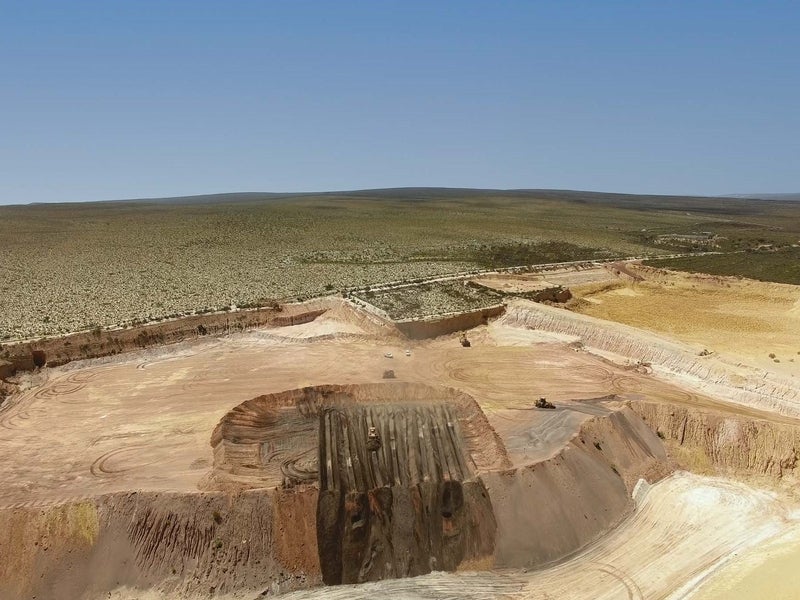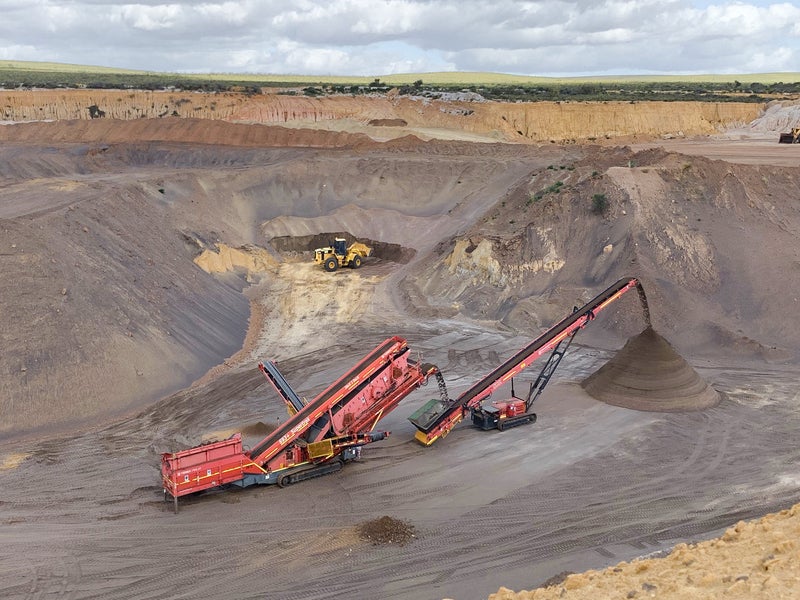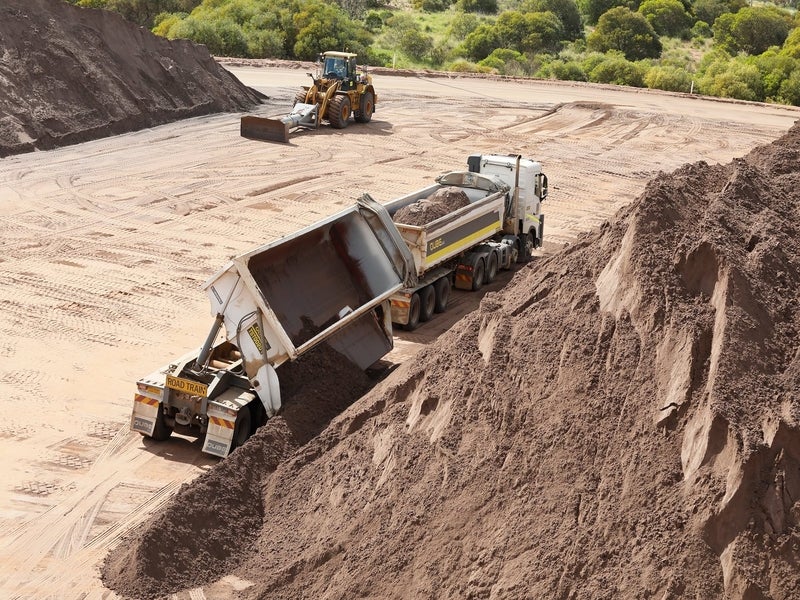The Eneabba rare earths project involves the mining operation of a stockpile by RefineryCo, a special purpose entity (SPE) owned by Iluka Resources, in the Western Australia state of Australia.
The stockpile consists of rare earths bearing minerals monazite and xenotime, produced as by-products from Iluka’s Narngulu mineral processing plant, and stored in the mining void from the mineral sand operations since the beginning of 1990.
A screening plant was commissioned in April 2020 under the phase one development of the Eneabba rare earths mining project, while a concentrator and a fully integrated refinery are planned to be constructed in the second and third phases, respectively.
The concentrator facility is expected to be completed and start operations in the second half of 2022.
The final investment decision (FID) on a fully integrated refinery was taken in April 2022, following the completion of a feasibility study. The refinery will have a capacity of 17.5 kilo-tonnes per annum (ktpa) of total rare earth oxide (TREO).
Construction on the refinery is expected to commence in the latter half of 2022, with the first production scheduled to begin in 2025.
Location, geology and mineralisation
The Eneabba rare earths mining operation is located approximately 8km southeast of the Eneabba town, and about 300km north of Perth city in Western Australia, Australia.
The project is situated on the State Agreement Act Tenement MLSA 267 and mining tenement M70/821.
The mineral sands deposits are located on the northwestern edges of the Swan Coastal Plain, towards the west of the Gingin Scarp and Dandaragan Plateau. The deposit occurs in the Quaternary coastal sediments and alluvium west of the Gingin Scarp, which is referred to as the Eneabba Plain.
Aeolian dunal depositions of white and yellow sands occur over the area, while the soil in the region comprises an upper profile of sands and gravelly sandy clays at depth.
The stockpile is a fine-grained sand, approximately 300m in length and 150m in width, with thickness varied from 1m to 15m.
It appears as orange-brown, gravelly, clayey sand covering the mineral resource. The mixed zone of mineral sands by-product is characterised by high mineral grades in combination with elevated slimes and oversize.
The mineralisation occurs as dark brown and black material beneath the mixed zone as fine-grained sand and distinguishable from the underlying in-situ yellow clayey sand.
Estimated reserves and resources
The in situ measured, indicated and inferred high mineral (HM) resources at the Eneabba rare earths stockpile are estimated to be 802kt grading at 33.4% ilmenite, 28.0% zircon, 18.1% monazite and 1.3% xenotime.
The proven and probable high mineral reserves stockpile are estimated to contain 756kt grading at 32.9% ilmenite, 28.2% zircon, 18.6% monazite and 1.3% xenotime.
Mining and ore processing
Phase one of the Eneabba rare earths mining operation involves the extraction and processing of monazite-rich tailings stockpile.
The operations are conducted through a front-end loader (FEL) to move the by-product from the stockpile and feed it into a mobile screening plant. Following the dry screening, the material is transported through trucks for dumping near the wet screening plant (WSP).
The WSP utilises a primary separation process to separate any material above 1mm in particle size.
The plant is equipped with Desliming cyclones for the removal of fine clay particles and recovery of mineral sands concentrate. The final product is stored at the site and later transported by road for onward transshipment to the port of Geraldton.
Infrastructure facilities
The infrastructure facilities at the Eneabba rare earths mining operation include administration building and accommodation camps, power supply, workshops and stores, site access roads, weighbridge, screening plants and wet screening plant.
Eneabba rare earths mining phase two and phase three
The Eneabba rare earths mining project is being developed in phases for the production of high-value rare earth oxides neodymium, praseodymium, dysprosium and terbium.
Phase two, approved in April 2021, involves an upgrade to the existing processing facilities, with the construction and operation of a new plant to separate mineral sands heavy mineral concentrate.
The new plant will produce a rare earth heavy mineral product consisting of monazite to be directly fed to the refinery.
A fully integrated rare earths refinery to be developed under phase three will utilise monazite feedstock from phase two along with other sources of rare earth mineral concentrate. The refinery process will comprise roasting, leaching, purification, solvent extraction and product finishing.
Eneabba mining background
The Eneabba open-pit mining was commenced in 1970 under the Mineral Sands (Eneabba) Agreement Act 1975 and its operations were halted in 2013.
The Narngulu mineral separation plant, operated by Iluka Resources since 1975, produces by-products, which were stockpiled at the Eneabba monazite pit (EMP) from 1994.
Phase one of Eneabba rare earths mining was approved in 2019 to recover the by-product material from the EMP and process it through a separation plant for the production of mineral sands concentrate (MSC).





